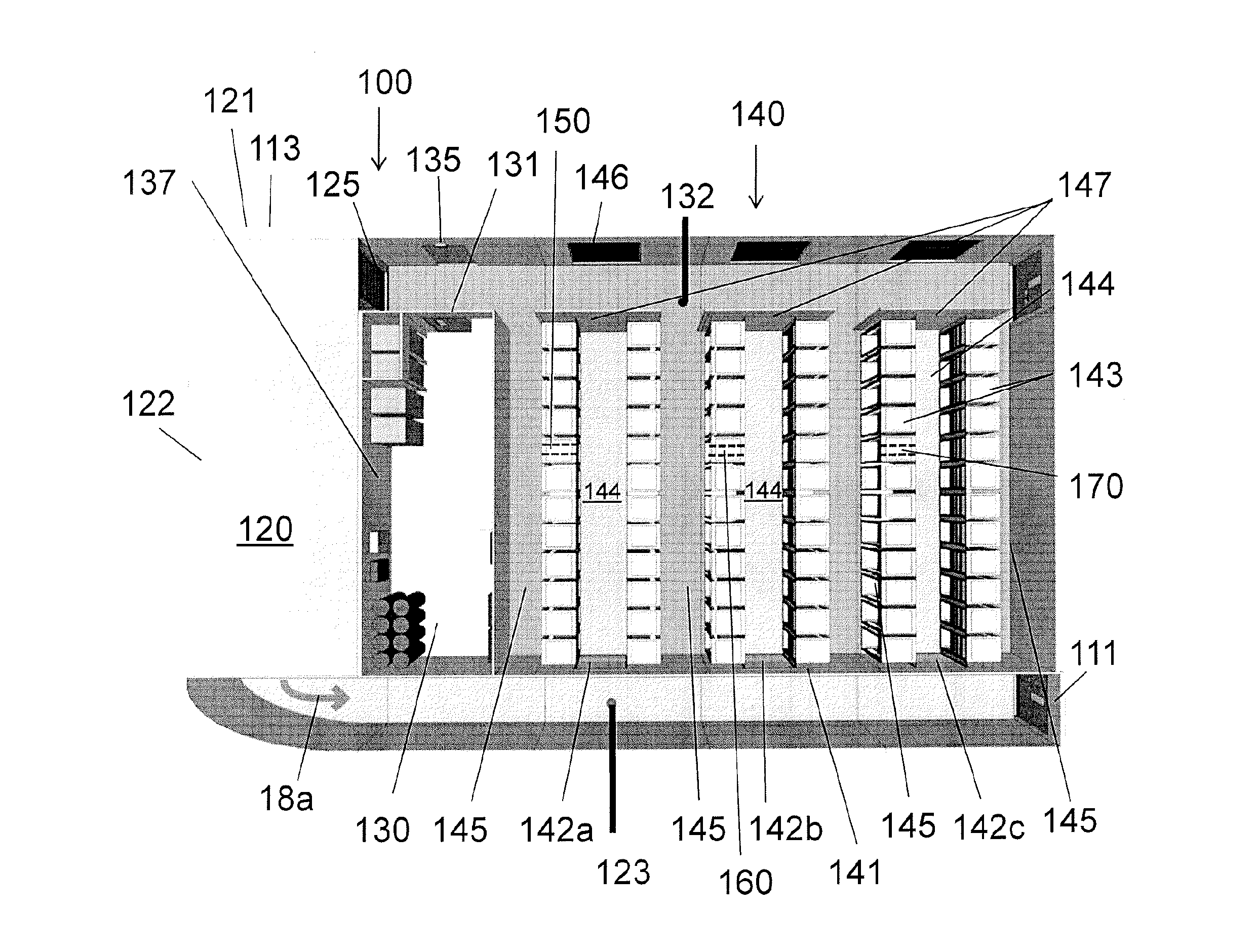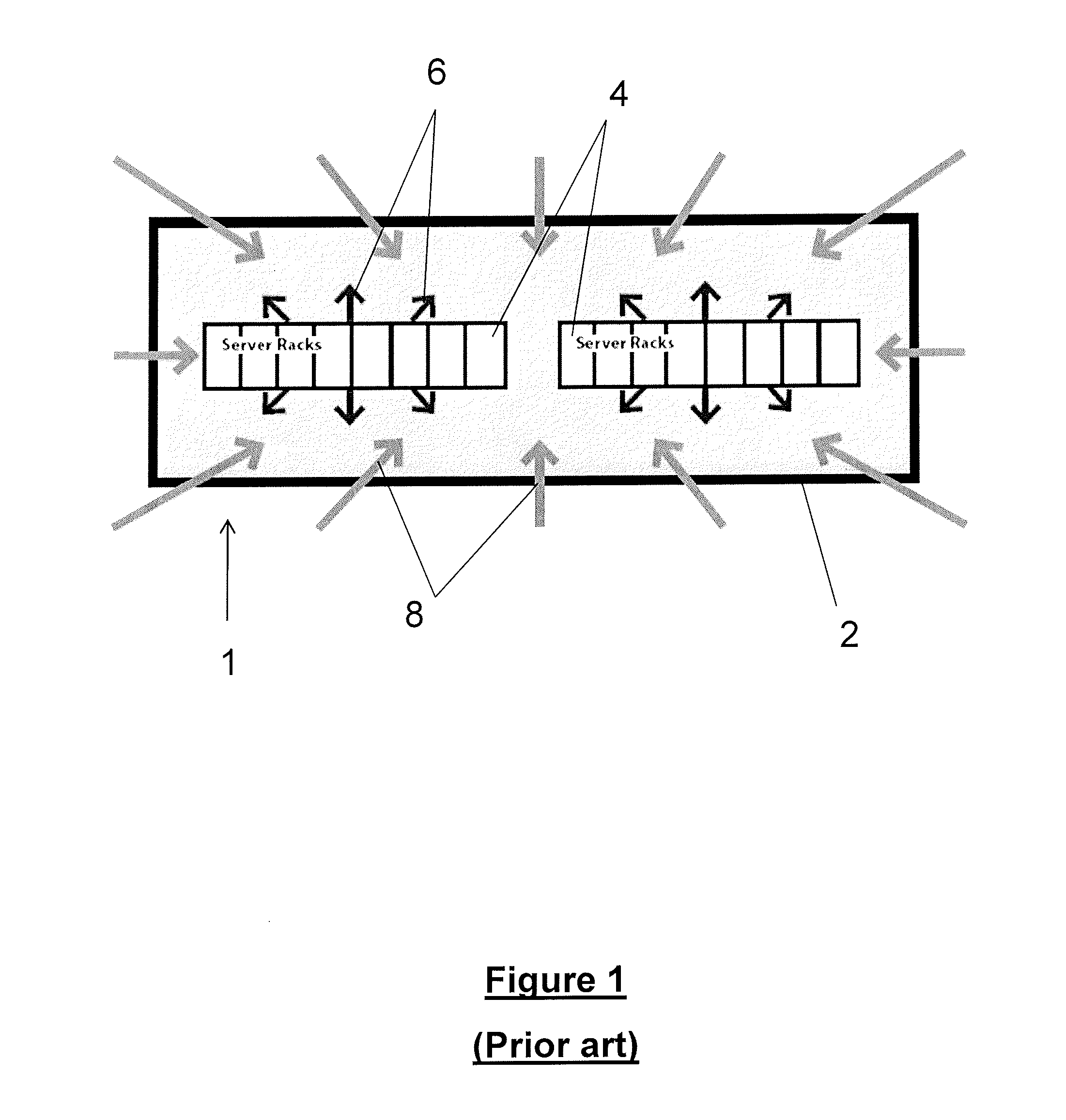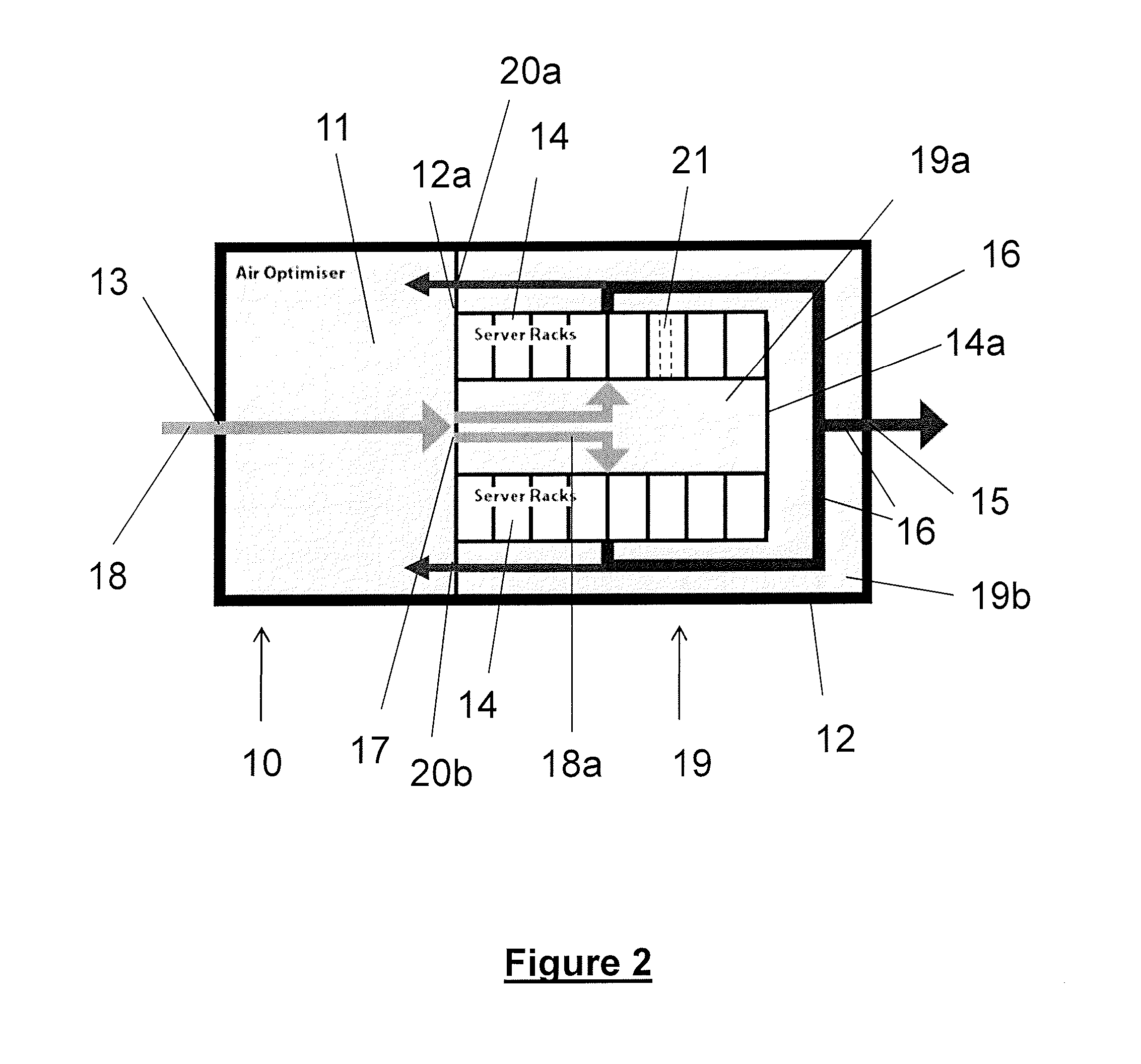Data Centre Cooling Systems
a cooling system and data centre technology, applied in the field of data centres, can solve the problems of equipment overheating, typical data centre arrangement not particularly energy efficient, and ineffective cooling of a data centre, and achieve the effect of less of a risk of an unintentional increase in temperatur
- Summary
- Abstract
- Description
- Claims
- Application Information
AI Technical Summary
Benefits of technology
Problems solved by technology
Method used
Image
Examples
first embodiment
[0113]FIG. 2 shows a data centre building 10 according to the invention.
[0114]The building 10 is rectangular with external walls 12. The building is divided into front and rear sections by an internal dividing wall 12a, located approximately one third of the length of the building from the rear external wall.
[0115]The rear section (on the left in FIG. 2) defines an air optimisation room 11, which provides a system of circulating cooling air in the building 10. Ambient air 18 can enter the air optimisation room 11 through an ambient air intake 13 in the rear external wall. Exhaust air 16, which has been heated by IT equipment in the data centre, can enter the air optimisation room through two exhaust air intakes 20a and 20b in the internal dividing wall 12a. The ambient air intake 13 and the exhaust air intakes 20a and 20b are fitted with dampers so that the amount of ambient air and the amount of exhaust air entering the air optimisation room may be controlled. When the ambient air ...
second embodiment
[0120]In use, ambient air 18 enters the air optimisation room 11 through the ambient air intake 13 and / or exhaust air enters the air optimisation room through exhaust air intakes 20a and 20b. The air that enters the air optimisation room will from here on be referred to as supply air. The supply air can consist of just ambient air, just exhaust air, or a mixture of ambient and exhaust air depending on the position of the ambient air intake damper and the position of the exhaust air intake dampers. The supply air is cooled / treated as necessary in the air optimisation room 11 and leaves through air passages 17 as cooling air 18a. The treatment and / or cooling of the supply air may be effected in accordance with the second embodiment described below. The volume of cooling air leaving the air optimisation room is controlled by a variable speed fan (not shown) in the air optimisation room.
[0121]The cooling air 18a enters the rack room 19 into the cold region 19a. The cooling air 18a moves...
PUM
 Login to View More
Login to View More Abstract
Description
Claims
Application Information
 Login to View More
Login to View More - R&D
- Intellectual Property
- Life Sciences
- Materials
- Tech Scout
- Unparalleled Data Quality
- Higher Quality Content
- 60% Fewer Hallucinations
Browse by: Latest US Patents, China's latest patents, Technical Efficacy Thesaurus, Application Domain, Technology Topic, Popular Technical Reports.
© 2025 PatSnap. All rights reserved.Legal|Privacy policy|Modern Slavery Act Transparency Statement|Sitemap|About US| Contact US: help@patsnap.com



